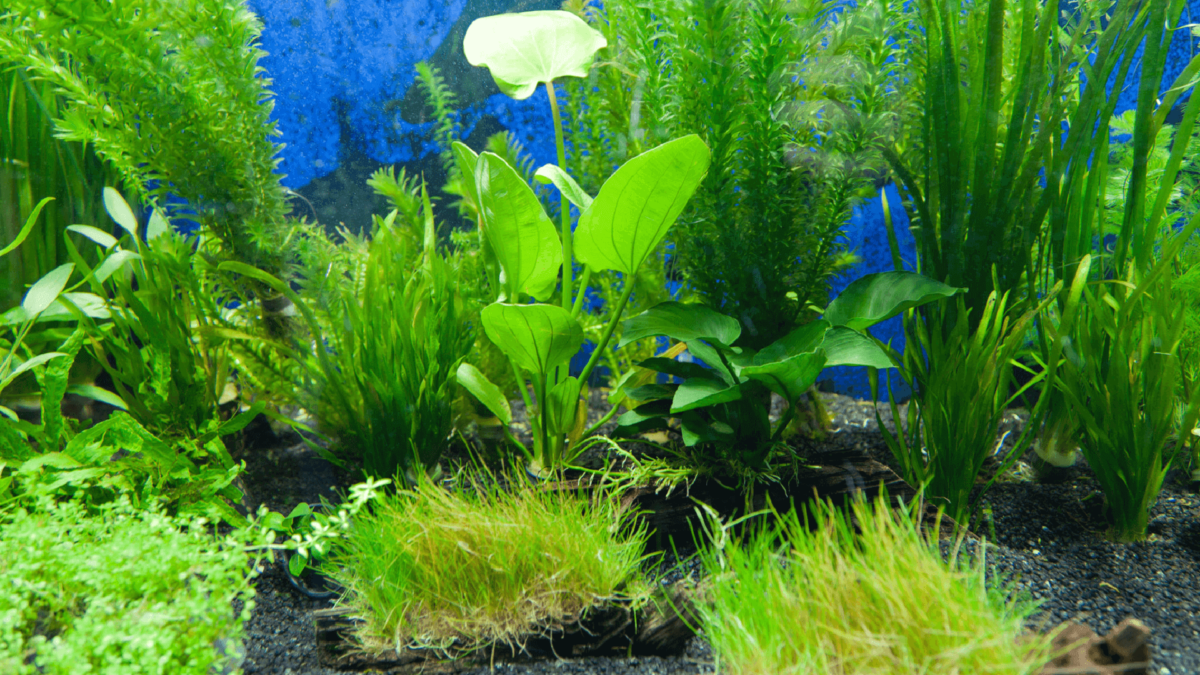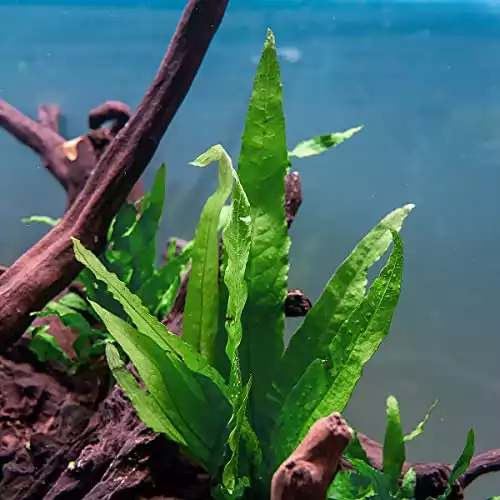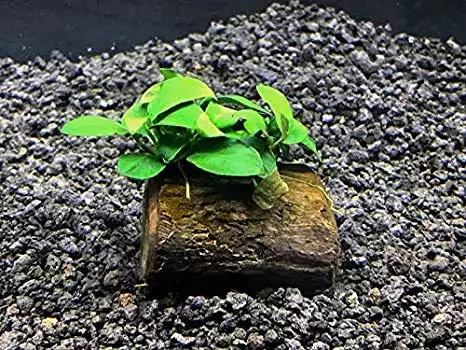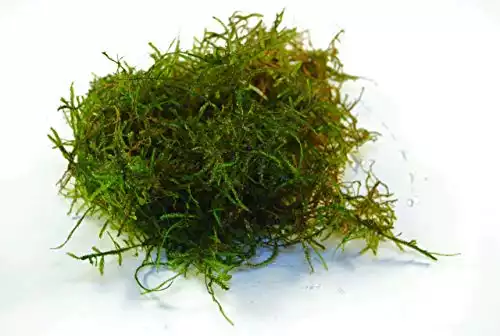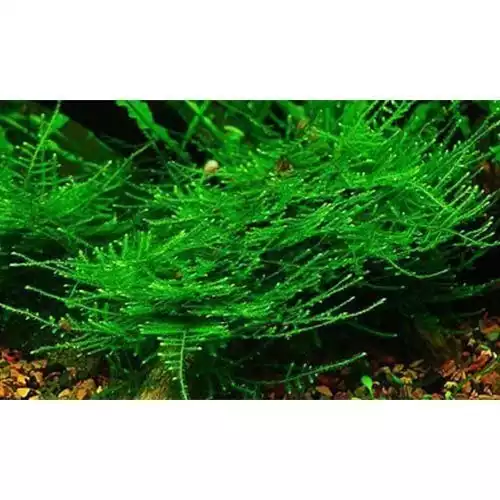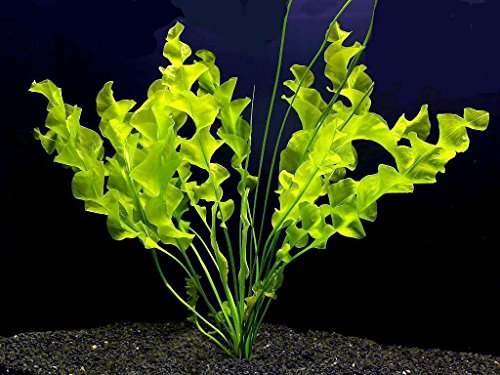For many people, keeping fish as pets is the perfect way to enjoy the beauty of the underwater world without having to deal with the hassle of caring for a more demanding animal.
And while a fish tank may seem like a simple enough task, there is actually a fair amount of planning and work that goes into setting up a healthy and balanced ecosystem.
One of the most important considerations you need is choosing the right plants. Aquarium plants provide a natural environment for your fish, as well as a place for them to hide.
Although they are all plants, they have their differences, specific features, and needs. Some plants require more care than others, and some can even be toxic to your fish.
There are hundreds of species of aquatic plants, and it can be difficult to know which ones are best for beginners.
With a lot of aquarium plants available today, it’s important to choose the right one for your aquarium. If you’re just getting started, let us help you.
In this article, we will take a look at some of the best beginner aquarium plants for fish enthusiasts. We will cover a wide range of options, from low-maintenance plants that are ideal to those species that can add a splash of color to your tank.
Whether you are just starting out or looking to add some new life to your aquarium, these plants are sure to thrive.
Contents
Why are aquarium plants important?
1. Plants help to oxygenate the water.
In an aquarium, fish and other aquatic creatures rely on oxygen to survive. The process of photosynthesis helps to release oxygen into the water, providing a crucial source of sustenance for aquatic life.
2. Plants help to absorb excess nutrients from the water.
While there are many different methods of water treatment, one of the most important is simple absorption. That’s right, plants play a vital role in keeping our water clean. They do this by absorbing excess nutrients and trapping sediment. As a result, they help to purify the water and keep it free of harmful pollutants.
3. Plants provide hiding places for fish.
Plants offer a place for fish to hide from aggressive tank mates or escape the bright lights. This can be particularly important for small or timid fish that might otherwise be bullied by larger fish.
4. Plants help to regulate the water temperature.
In a natural setting, plants help to shade the water and cool it down. By absorbing sunlight and transpiring water, plants help to keep the water cool and comfortable for your fish. This can create a more stable environment for your fish and make them less stressed.
5. Plants add beauty and interest to an aquarium.
A well-planted tank can be truly stunning, and it will give you something enjoyable to look at every day. If you are into aquascaping, then having the right plants that will beautify and will add life to your aquarium is a must.
Our Choice for Best Beginners Aquarium Plants
1. Winner: Java Fern

Pros
Fills in open spaces in the aquarium
Java Fern is a great plant for filling in empty spaces in a planted aquarium tank. It has a nice, bushy appearance and its leaves are textured, which adds interest to the tank. Java Fern is also a low-maintenance plant, which is ideal for busy fish enthusiasts.
Versatile
This versatile plant can be used for a variety of different looks in an aquarium. It can be left to grow naturally, or it can be trimmed and shaped to create a more sculpted look. You can also use it for leafy groupings on driftwood or stone arrangements in the freshwater planted aquarium aquascape.
Low maintenance
Java Fern is an easy-care plant that is perfect for busy fish enthusiasts. It has low light requirements and can benefit from regular fertilization, but it does not require additional Co2. It’s a hardy plant that can tolerate a wide range of water conditions.
Cons
Can be damaged by some inhabitants
While Java Fern is a tough plant that can tolerate a wide range of water conditions, it can be damaged by some water inhabitants like the Large green Severum. These fish are known for their voracious appetites and can quickly devour a Java Fern.
- Java Fern is one of the most popular aquarium plants and is loved by all skill levels due to its ease of care and its ability to instantly transform a normal aquarium into a captivating aquascape.
- Bright green and pointed leaves will fill up space and complement driftwood and stones very well, and because Java Fern are epiphytic, they can be attached directly to these hardscapes using thread or aquarium glue very easily.
- Easy Care – It has low light requirements and does not require additional Co2 making it a great choice for beginners to live aquatic plants.
2. Runner Up: Marimo Moss Ball
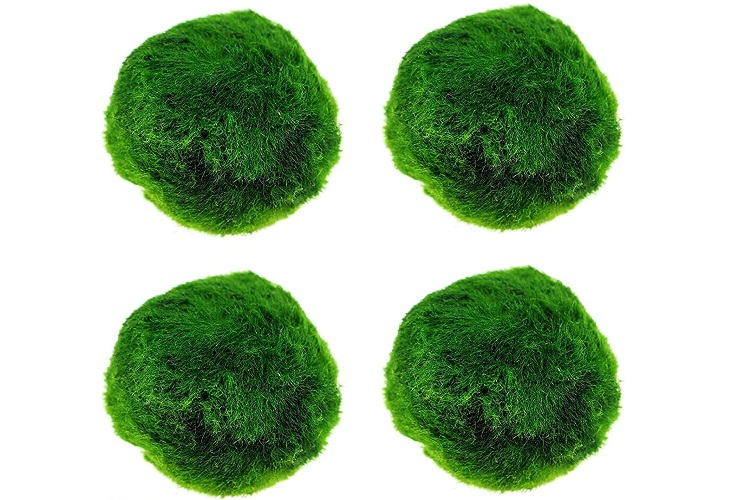
Pros
Unique appearance
The Marimo Moss Ball is a unique aquatic plant that is easy to preserve. It has a beautiful appearance and is great for fish and aquarium enthusiasts. It is low maintenance and does not require much care.
Functional
Moss balls are beautiful for both indoor and outdoor decorations. They can be used as landscape plants in an aquarium to add to the aesthetic appeal and attractiveness. This plant also provides food and shelter for the fish and shrimp in the aquarium.
Helps stabilize water quality
The Marimo Moss Ball helps to give ecological balance and stabilization to water quality. It can purify fish waste and leftover food scraps, keeping the water clean and healthy for your fish.
Cons
They don’t reproduce
Moss balls won’t reproduce in your tank but they will surely get bigger. So if you want more moss balls in your aquarium you need to buy more, meaning additional expense on your part.
Tendency to float around
Moss balls tend to float around the aquarium, meaning they might not stay where you want them to. This can be frustrating if you’re trying to create a specific or clean look in your tank.
- REALISTIC LOOKING: This is a natural, organic gorgeous bowl filler made from hand harvested moss-Real Dried Moss. It is the beauty of nature at its best! These moss balls are way cuter than the faux moss balls out there! Large size! 3.5Inch – Set of 6 !
- NATURAL SMELLS: Filled with the taste of nature, the moss ball is done without addition of any toxic or dangerous chemicals or components. The preserved plants are 100% biodegradable.
- EVERGREEN: No water, soil, fertilizer needed. They are preserved – the natural moss is treated to remain soft and pliable without any maintenance needed.
3. Best Value for Money: Anubias Barteri
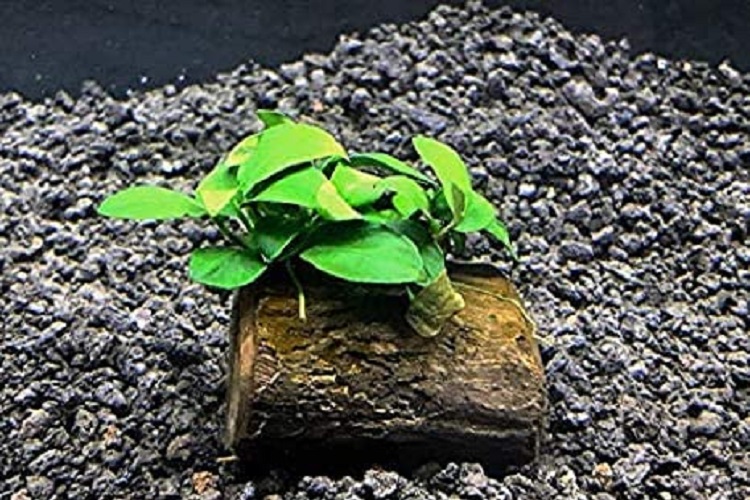
Pros
Keeps the aquarium clean
Anubias Barteri is a great plant for keeping your aquarium clean. This plant helps to remove nitrates and other pollutants from the water, so your fish will stay healthy and happy.
Can reproduce by growing from cuttings
Anubias Barteri grows well from cuttings, so you can usually reproduce it. All you need to do is simply remove the plant from the water, then using a sharp knife, carefully slice the rhizome into two or more pieces, leaving at least three or four healthy leaves on each new section.
Put the new pieces back in the substrate, without burying the rhizome and wait for it to propagate.
Can be placed in different areas of your aquarium
Anubias Barteri can be placed in different areas of your aquarium. You can plant it in your substrate or tie it to your driftwood, rocks, or other ornaments. It can be placed in the foreground or background, or middle of your aquarium.
Cons
Prone to algae growth
Anubias Barteri is prone to algae overgrowths when exposed to too much light. Algae can be removed by hand, but this is time-consuming and will need to be done regularly.
Anubias Barteri is also susceptible to root rot if the plant is kept in water that is too dirty. Be sure to change the water regularly and clean the Anubias roots to prevent this from happening.
4. Best High End: Amazon Sword

Pros
Help keep ammonia and nitrate levels
The Amazon Sword helps keep ammonia and nitrate levels down in their tanks. This plant is a great oxygenator, and it will help to keep your tank clean and clear. It also removes nutrients and nitrates from the tank water.
Can reproduce naturally
This plant reproduces by sending out runners, and each runner will produce a new plant. You can also propagate the Amazon Sword by taking cuttings from the mother plant. This plant is very easy to care for, and it will thrive in a wide range of water conditions.
Provides shelter and hiding spots for fish
This plant gets its name from its long, sword-like leaves, which provide natural hiding spots for small fish and shrimp.
Cons
Almost impossible to relocate.
The Amazon Sword is almost impossible to relocate once it has been established. After they’ve grown roots, they create enormous roots that may uproot half of your aquarium.
Algae growth on the leaves.
Amazon Sword Plant’s leaves are highly prone to algae development, especially if there is too much light and poor aquarium water qualities.
This is why it is critical to perform regular water changes, as well as remove organic waste and debris from the tank to avoid algae filament formation on plants’ leaves.
- LIVE AQUARIUM PLANT – 1 Bundle of Amazon Sword (Echinodorus Amazonicus)
- SIZE – 6”+ length (Slightly different, May vary)
- FREE ICE OR HEAT pack – Due to extremely weather, Ice and heat pack is available up on request. Simply put “ICE” or “HEAT” after your name on your shipping address.
5. Best Budget Pick: Vallisneria
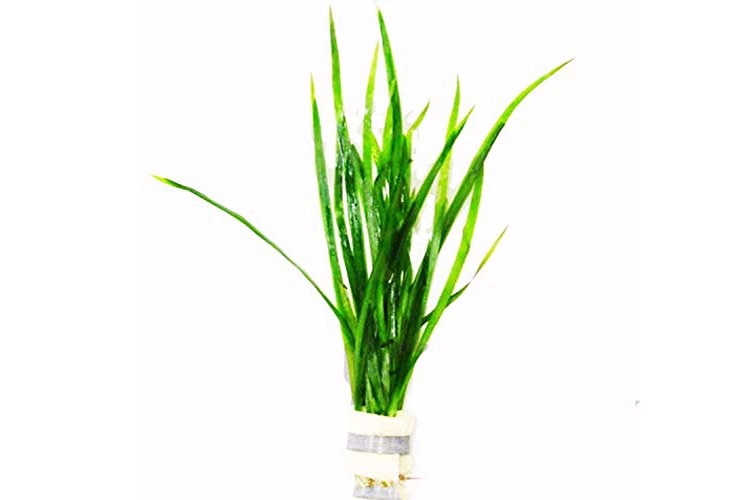
Pros
Highly unpalatable to most plant-eating fish
If you’re worried about your fish destroying your beautiful aquarium plants, then Vallisneria is the plant for you. This plant is highly unpalatable to most plant-eating fish, so they’ll leave it alone and allow you to enjoy its beauty.
Makes tanks attractive
This plant is perfect for adding vertical accents to the background of your tank, and some varieties can even be used to adorn the mid-grounds.
With its tall rosulate structure, bright ribbon-like green leaves, and ability to populate rapidly, Vallisneria is sure to make your aquarium stand out from the rest.
Its roots provide a home to the good aquatic bacteria
One of the great things about Vallisneria is that their roots provide an ideal home to the good aquatic bacteria that help regulate your tank’s nitrogen cycle.
This is important because it helps to prevent dead zones in your substrate, which can be dangerous for your fish. Plus, the roots help to keep the substrate clean and free of debris.
Cons
Red coloration in the leaves
One downside of Vallisneria is that the leaves may become red once it has been established. While this isn’t harmful to the plant, it can be unsightly. If you don’t want your plant to turn red, you can try removing any affected leaves.
Melting
Another downside of Vallisneria is that it does not react well to unstable CO2 levels and low nitrate levels. If your plants are exposed to these conditions, they will gradually decline and the leaves will start to wither.
6. Alternative 1: Betta Bulb
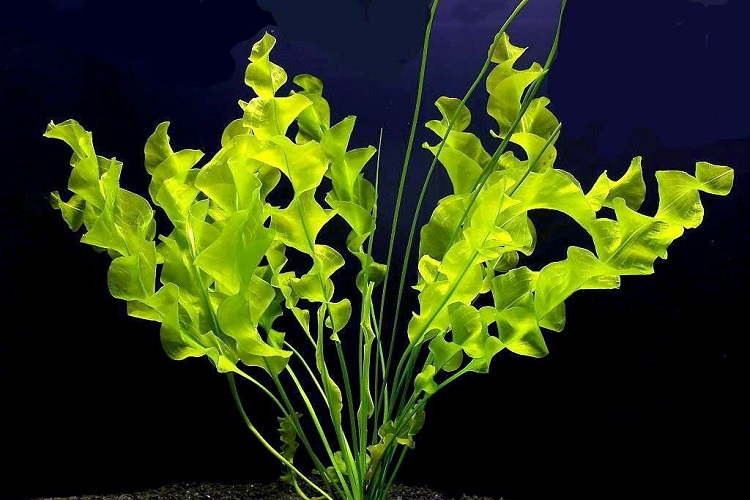
Pros
Perfect for 10+ gallon aquariums
Betta Bulbs are perfect for 10+ gallon aquariums. This is because they are relatively large and need plenty of space to swim around. They also do best in tanks with other fish, so they make a great addition to a community tank. If you’re looking to add some color and life to your aquarium, then betta bulbs are a great option.
Dead leaves serve as food for tank scavengers
The dead leaves that fall from this plant serve as food for the scavengers in your tank. Detritus eaters will also benefit from the nutrients in the dead leaves.
Aesthetics for aquascaping
Because of this plant’s connection with betta fish, led to the plant’s nickname, the Betta Bulb. Betta Bulbs are not only aesthetically pleasing, but they also provide a dense and lush feeling of completion to your tank. They recreate the natural habitat of many aquarium fish, including betta fish.
Cons
Takes time to grow
Betta bulbs can take some time to grow, but once they have been established, they are relatively easy to care for. And because it grows slowly, you will save a lot of time because you don’t need to trim it often.
- You will get 1 Aponogeton Ulvaceus Bulb ready to place in your aquarium. Grows when water temperatures are between 65-72F. PLEASE NOTE THAT THEY WILL NOT GROW IF WATER TEMPERATURE IS OVER 72F.
- The plant will start growing after a week of submerging the bulb
- Grows fast and large in a few weeks under proper conditions
7. Alternative 2: Java Moss
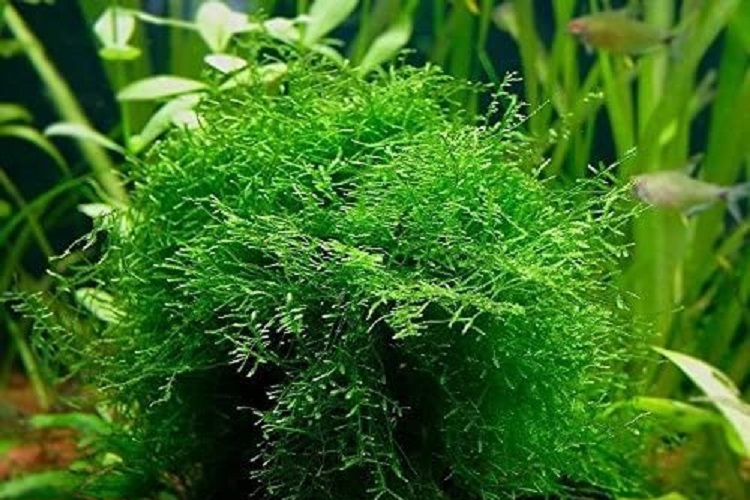
Pros
Gives an ecosystem to the aquarium
Java moss is a great addition to any aquarium because it provides an ecosystem for the fish. Java moss helps lessen nitrates and ammonia. Its main benefit is in baby shrimp survival rates because it gives refuge for those young shrimps.
Best for breeders or breeding tanks
Most fish will love it because it provides such an ideal place for spawning. It gives a safe space for their private time to be able to breed. The eggs produced from the breeding stick to the Java Moss leaves and help them to remain hidden.
Secure the substrate
Java moss can serve as a carpeting plant in your aquarium. The eco-friendly carpet makes efforts to suppress the substrates at the bottom of the tank, which solves your problem of brown tank water.
Durable
This aquarium plant does not require much lighting or care, and it grows pretty much everywhere without any difficulty. There is not much that you need to worry about the plant. Java Moss will grow in changing environments and water parameters in your fish tank.
Can be used in different ways
You can connect it to any part of your aquarium using thread, fishing line or superglue. Also, you can use it as a floating plant or to carpet your fish tank. Just use your creativity and you will achieve that dream aquarium you’ve always wanted.
Cons
Can clog your filter
The particles that come out of the Java moss can create the problem of clogging the filter. However, there’s a remedy to this. As easy as it sounds, you just have to clean the filter more often if it does happen.
You cannot stop clogging majorly when the plant grows and decomposes and sheds a lot. So, take it as a part of the process of taking care of your plants and aquarium.
Plant debris
Plant debris is a big concern if you want to keep your aquarium water clear at all times. To solve this, you can simply set the plant in the breeding tank as the fries and shrimplets will eat the infusoria.
Moreover, you can also add snails that love to munch on the plant debris and decomposed matter. Just make sure you clean your tank often so that the issue is solved.
8. Alternative 3: Christmas Moss
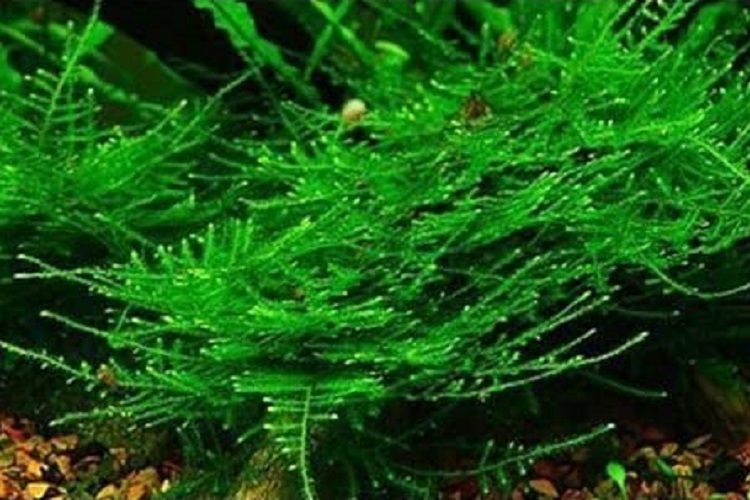
Pros
Thick appearance
This plant will create a coral vibe in your aquarium because of its thick, luscious leaves that make your aquarium look more grandeur. Plus, the fern-like leaves of Christmas Moss are sure to add a touch of beauty to your fish tank.
Easy to attach or add to your aquarium
Christmas Moss is easy to attach to any object in your fish tank. This means that you can get creative and experiment with different designs for your aquarium. So go ahead and add your personal touch to your fish tank.
Tidy appearance
Christmas Moss always looks tidy and well-kept. This makes it a perfect addition to aquariums that have a lot of flat surfaces and receive ample lighting. Plus, since Christmas Moss doesn’t typically grow too far into the shade, it’s perfect for attaching to broad tops of driftwood and rocks.
Cons
Algae growth
Algae is a common issue with all aquatic plants and moss. Once algae grows on plants, they are quite difficult to remove. Developing algae in the aquarium usually means an imbalanced ecosystem so you need to evaluate the parameters like CO2 injection, lighting, and fertilization.
Fragments
Debris fragments give an unpleasant look and can affect the health of your fish. These fragments are generally a water-related issue so you need to monitor the water tank’s flow and filtration.
- IMPORTANT: Please note that during times of extreme weather, live plants will can suffer due to extreme temps. During winter, do not order live plants when temperatures are expected to go below 20F at the lowest point during the day.
- LIVE AQUARIUM PLANT – 1 Beautiful Christmas Moss Baseball Size Portion
- LIVE ARRIVAL – We stand behind live arrival on all of our livestock provided you don’t order when temperatures are expected to go below 20F at the lowest point during the day. If a plant ever arrives dead send us a clear photo of the plant in the unopened bag and and we will replace once verified.
9. Alternative 4: Monte Carlo
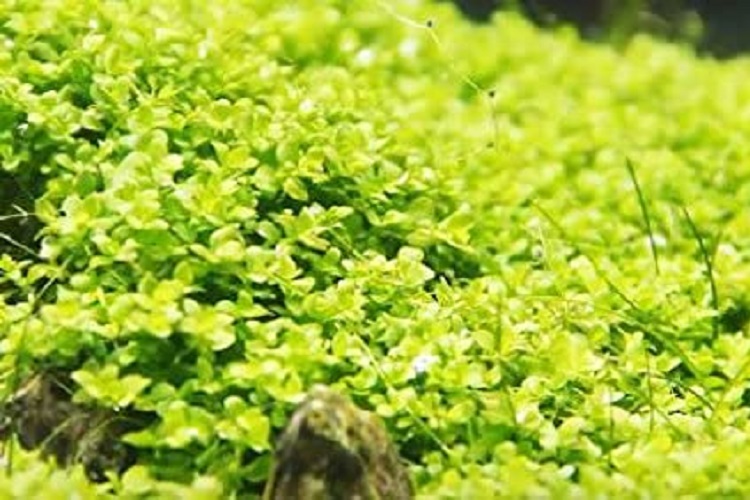
Pros
Fast growing carpet
This plant creates a fast-growing carpet of foreground plants in your aquarium by adding light and CO2 that will help them develop quickly and become compact.
This can be an especially useful technique if you’re trying to fill in a bare spot in your aquarium or create a lush, green landscape. Just be sure to keep an eye on your plants and trim them back as needed so they don’t take over the entire tank.
Attractive appearance
The Monte Carlo is dubbed the New Large Pearl Grass because of its perfect circles resembling that of a pearl. For every stem, each node has at least two round leaves. Once it has fully covered your fish tank’s floor, it will look like a mat with circular green patterns.
With its vibrant lime green color and round leaves, the Monte Carlo is a great option to make your aquarium’s carpeting look more alive. Its bright color can blend well and complement a neutral-toned item in the aquarium, such as its substrate and rock decorations.
Horizontal coverage
The Monte Carlo plant is a versatile option for all sizes of tanks because it spreads outwards rather than upwards. This provides broad, flat coverage to the aquarium flooring. If there’s an elevation, its shoots will naturally stoop on the ground. This makes them a great choice if you want to create different levels or areas in your aquarium.
Absorbs pollutants
The Monte Carlo plant is great at absorbing pollutants such as fish waste, which can help to fertilize the plant. This is a great way to keep your aquarium clean and healthy. Just be sure to not overdo it with the fish waste, as too much can harm the plant.
Cons
Not suitable for already established aquariums
This is because the plant needs a lot of space to spread out, and established aquariums often don’t have enough space. Additionally, the plant can be disruptive to existing plants and decorations.
- LIVE AQUATIC PLANT : Micranthemum Monte Carlo, alternative to Dwarf Baby Tears with brighter and bigger leaves. Become popular among aquarist.
- CREATE FAST GROWING CARPET : Adding light and CO2 will help them developing your foreground and become compact.
- TISSUE CULTURE : also known as vitro plants. With high quality technology facilities and lastest tissue culture laboratory, TC cup from Greenpro grown with sterile process with special gel to ensure to be free from algae, disease, pest and snail.
10. Alternative 5: Cryptocoryne Lutea
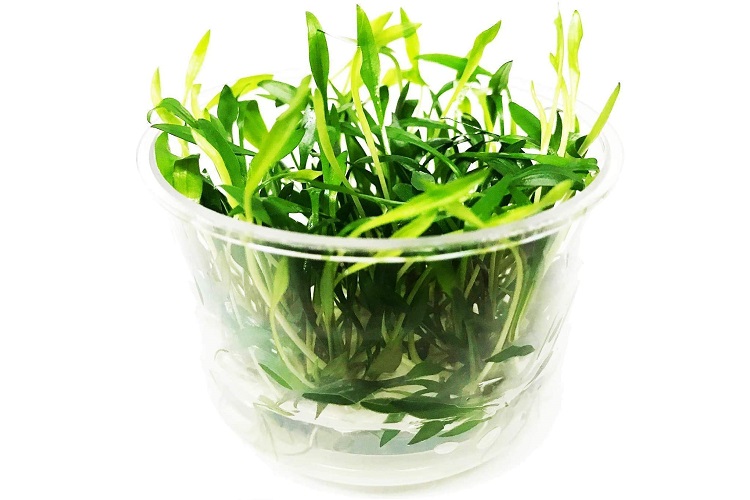
Pros
Perfect for any aquatic pet
This plant is perfect for any pet shrimp, betta fish, crayfish, turtle, or terrarium snail. This plant is easy to care for and maintain, making it a great choice for beginner aquarium enthusiasts.
Cryptocoryne lutea is also a versatile plant, able to adapt to a wide range of water conditions. Whether you have hard or soft water, this plant will thrive.
Provides shelter for your fish
If you have shy fish or shrimp, Cryptocoryne Lutea is the perfect plant for you. This plant provides shelter and hiding spots for your fish, making them feel safe and secure.
Cons
Shedding leaves
A common problem associated with this plant is Crypt melt, which is when the plant sheds all of its leaves. This can happen when the plant is first introduced to a new aquarium, as it needs time to adjust to the new water conditions.
Crypt melt is more frequent when Crypts are inserted in a new aquarium as a result of the sudden change in chemical values, temperature and lighting conditions.
Grows slowly
One downside of Java Moss is that it grows slowly. This can be a problem if you are looking for a plant to quickly cover an area.
However, shrimp enjoy slow-growing plants because they provide more places for them to hide and forage. Also, because it grows slowly, you don’t need to worry about trimming it too often.
- LIVE AQUARIUM PLANT IN VITRO : Greenpro grower team using lastest culture technologies to produce unique and premium quality aquatic plants making them perfect for any aquatic pet shrimp, betta fish, crayfish, turtle and terrarium so on.
- EXTENDED SHELF LIFE : With our sterlie gel that can hold for freshness upto a week in a cup before planting with proper conditions.
- TISSUE CULTURE : also known as vitro plants. With high quality technology facilities and lastest tissue culture laboratory, TC cup from Greenpro grown with sterile process with special gel to ensure to be free from algae, disease, pest and snail.
Planting Tips for Beginner Aquarium Plants

When you are planting your new beginner aquarium plants, follow these tips to get the best results:
Planting Depth
Research the optimal planting depth for each species. As a general rule, plant the roots without burying the rhizome. Tie Anubias and Java Fern to driftwood or rocks.
Use Plant Weights
To keep plants anchored initially, make sure you attach lead strips or plastic mesh grids to the base. This prevents floating until the roots are established.
Add Nutrient Substrate
Choose a substrate containing nutrients to feed root feeders like Amazon Swords. Add root tabs for supplemented minerals.
Fertilize Regularly
Use liquid fertilizers in the water column for species that mainly absorb nutrients through their leaves.
Adjust Lighting
Make sure lighting matches the plants’ requirements. Low-light plants do well with ambient daylight or low wattage bulbs.
Propagating Best Beginner Aquarium Plants
Propagating plants allows you to expand your collection for free. Here’s how to propagate the easiest plants for aquarium:
- Stem Plants – Snip off 3-5 inch cuttings below a leaf node and re-plant the tops. Remove lower leaves. The stem will sprout roots.
- Rhizome Plants – Cut rhizomes into sections, leaving a few leaves per portion. Re-plant the divisions. Java Fern and Anubias propagate this way.
- Runners – Daughter plants form at the end of runners extending from the mother plant. Sever the runner and attach the offspring elsewhere.
- Offshoots – Species like Amazon Sword produce baby plantlets called offshoots. Carefully separate these once they have small roots and re-plant.
Low-Light Good Beginner Aquarium Plants Alternatives

For tanks without strong lighting, try these low-light live aquarium plants for beginners:
- Java Moss – An easy floating or attachable plant that tolerates low light. Provides hiding spots for fry and shrimp.
- Marimo Moss Balls – Slow-growing algae balls that oxygenate water. Remove debris entangled in the moss during weekly water changes.
- Anubias – With broad leaves and slow growth, this rhizome plant thrives in low to moderate light. Supplement with liquid fertilizer.
- Java Ferns – Hardy, low-maintenance ferns that propagate readily. The textured leaves prefer gentle lighting.
Beginner Aquarium Plants and Fish Compatibility
When selecting fish, research which species are prone to nibble on plants:
- Goldfish – Voracious plant nibblers. Avoid keeping delicate plants with Goldfish. Offer vegetables to distract from plants.
- Cichlids – Aggressive diggers that may uproot plants. Provide ample hiding spaces and driftwood to divert attention.
- Plecos – Heavy-bodied armored bottom dwellers that can flatten plants while foraging. Weight down plants until established or avoid delicate carpeters.
- Silver Dollars – These fast-moving schooling fish will munch on soft-leaved plants. Java Fern and Anubias hold up better.
Meanwhile, sharp-leaved plants can damage fish with long, flowing fins. So, avoid pairing Bettas or Guppies with plants like Hornwort.
Conclusion
Aquarium plants are important for a variety of reasons. Not only do they provide aesthetic value and create a more natural environment for the fish, but they also play an important role in maintaining water quality.
The best beginner aquarium plants should be easy to care for and relatively low-maintenance. We hope that after reading this article you can decide on the plant that you want to add to your aquarium. Thank you for reading

Ian Sterling, founder of Fishlab.com, began his aquarium journey over 30 years ago, driven by a deep fascination for fish and their diverse personalities. His website, Fishlab.com, is dedicated to making fishkeeping accessible and enjoyable, offering beginner-friendly guidance, expert insights, and a community for aquarists to connect and share experiences.


